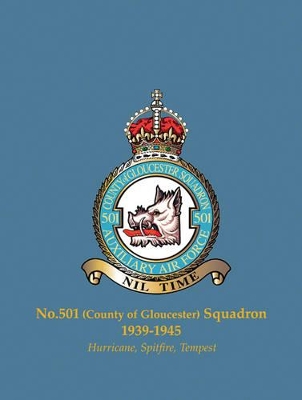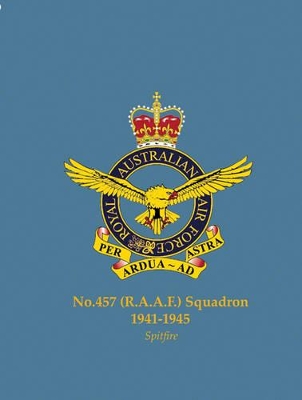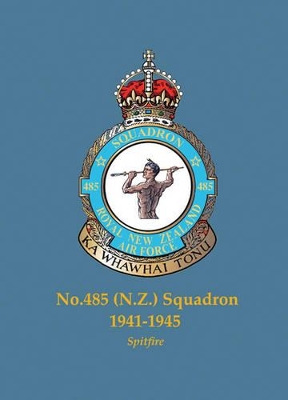Famous Commonwealth Squadrons of WW2
3 total works
No.501 (County of Gloucester) Squadron, 1939-1945
by David Watkins and Phil Listemann
Published 15 September 2008
The squadron was formed as No 501 (City of Bristol) Squadron as part of the Special Reserve squadrons in June 1929, made up of volunteers and regulars. In 1930 it became "No 501 (County of Gloucester) Squadron". On 1 May 1936 it was transferred to the Auxiliary Air Force.
When war was declared in September 1939, 501 Squadron was based at RAF Filton, near Bristol. On 10 May 1940, the Squadron moved to France where it saw extensive action. After the retreat from France, its battle-hardened pilots were stationed at Gravesend up to 10 September 1940. It subsequently served at RAF Kenley, south London, until 17 December 1940. At Kenley, the squadron was commanded by Harry Hogan and consisted of Hawker Hurricanes.
The squadron included several fighter aces of WWII: Ken Mackenzie,"Ginger" Lacey, Stanislaw Skalski, Robert Dafforn and Kenneth Lee. Ginger Lacey was one of the highest scoring pilots in the Battle of Britain. Robert Dafforn was the tallest man in Fighter Command, and had great difficulty in fitting into his Hurricane.
The squadron included a number of Polish airmen, one of whom, Steve Woltanski, reputedly never spoke English.
The Squadron was disbanded in 1957 along with all the Auxiliary units. However, it was reformed in the Force Protection role in 2001 at RAF Brize Norton. In 2003, its personnel deployed as part of Operation Telic, the liberation of Iraq. The squadron continues to deploy personnel on Force Protection duties in this region.
When war was declared in September 1939, 501 Squadron was based at RAF Filton, near Bristol. On 10 May 1940, the Squadron moved to France where it saw extensive action. After the retreat from France, its battle-hardened pilots were stationed at Gravesend up to 10 September 1940. It subsequently served at RAF Kenley, south London, until 17 December 1940. At Kenley, the squadron was commanded by Harry Hogan and consisted of Hawker Hurricanes.
The squadron included several fighter aces of WWII: Ken Mackenzie,"Ginger" Lacey, Stanislaw Skalski, Robert Dafforn and Kenneth Lee. Ginger Lacey was one of the highest scoring pilots in the Battle of Britain. Robert Dafforn was the tallest man in Fighter Command, and had great difficulty in fitting into his Hurricane.
The squadron included a number of Polish airmen, one of whom, Steve Woltanski, reputedly never spoke English.
The Squadron was disbanded in 1957 along with all the Auxiliary units. However, it was reformed in the Force Protection role in 2001 at RAF Brize Norton. In 2003, its personnel deployed as part of Operation Telic, the liberation of Iraq. The squadron continues to deploy personnel on Force Protection duties in this region.
No. 457 Squadron was formed at Baginton in England on 16 June 1941. Equipped with Supermarine Spitfire fighter aircraft the squadron completed its training and began flying operational patrols from the Isle of Man in August. These patrols did not result in any contact with German aircraft and the Squadron partially served as an operational training unit supplying Spitfire pilots to other squadrons. In March 1942 the Squadron moved to Redhill Airfield in Surrey and began flying shipping protection patrols and fighter sweeps over northern France. The Squadron continued in this role until May when it was withdrawn from operations ahead of being deployed to Australia.
No. 457 Squadron departed Britain in June 1942 and arrived in Australia in August. Although the Squadron reassembled at RAAF Base Richmond in September it did not receive replacement Spitfires until November. In January 1943 No. 457 Squadron arrived in Darwin where it formed part of No. 1 Wing RAAF which was tasked with defending the town from Japanese air attacks. The Squadron participated in a number of air battles over Darwin during the first half of 1943 and claimed its first victory in the Pacific Theatre on 7 March 1943. Japanese air activity over northern Australia was rare from late July 1943, however, and the Squadron saw little combat until it commenced ground attack operations over the Netherlands East Indies in April 1944. In February 1945 No. 457 Squadron moved to Morotai Island where it continued in the ground attack role as part of the Australian First Tactical Air Force. The Squadron was redeployed to Labuan Island off Borneo in June where it took part in the later stages of the Borneo Campaign. Following the end of the war No. 457 Squadron was disbanded at Labuan on 7 November 1945.
The story of this unit, the first ever published on this Australian unit, is narrated in 88 pages with appendices comprising the claim list, operational and accidental losses. The pilots'roster gives the war service of all the 194 pilots (175 Australians, 9 British, 5 Canadians, 4 New Zealanders and 1 Newfoundlander) who had been posted or attached to the unit between 1941 and 1945.
No. 457 Squadron departed Britain in June 1942 and arrived in Australia in August. Although the Squadron reassembled at RAAF Base Richmond in September it did not receive replacement Spitfires until November. In January 1943 No. 457 Squadron arrived in Darwin where it formed part of No. 1 Wing RAAF which was tasked with defending the town from Japanese air attacks. The Squadron participated in a number of air battles over Darwin during the first half of 1943 and claimed its first victory in the Pacific Theatre on 7 March 1943. Japanese air activity over northern Australia was rare from late July 1943, however, and the Squadron saw little combat until it commenced ground attack operations over the Netherlands East Indies in April 1944. In February 1945 No. 457 Squadron moved to Morotai Island where it continued in the ground attack role as part of the Australian First Tactical Air Force. The Squadron was redeployed to Labuan Island off Borneo in June where it took part in the later stages of the Borneo Campaign. Following the end of the war No. 457 Squadron was disbanded at Labuan on 7 November 1945.
The story of this unit, the first ever published on this Australian unit, is narrated in 88 pages with appendices comprising the claim list, operational and accidental losses. The pilots'roster gives the war service of all the 194 pilots (175 Australians, 9 British, 5 Canadians, 4 New Zealanders and 1 Newfoundlander) who had been posted or attached to the unit between 1941 and 1945.
Manned by New Zealand pilots of the Royal New Zealand Air Force, but controlled by the Royal Air Force, 485(NZ) Squadron was formed on 1 March 1941 at RAF Driffield, in Yorkshire. Initially No 485 Sqn was equipped with old Spitfire Mk Is for its "working up" period in 13 Group, which was carried out with no recorded fatalities. The Spitfire Mk Is were exchanged for Spitfire Mk IIs on June 1, 1941.
By July 1941 the squadron had scored its first victories, suffered its first combat fatalities and had moved to RAF Redhill, a frontline 11 Group base to take part in offensive operations. One type of operation was fighter escort for"Circus" raids, in which a small number of RAF bombers (originally Bristol Blenheims and later Short Stirlings) were used as bait to draw up enemy fighters.
The history of the Squadron is narrated in 88 pages followed by full appendices comprising all the claims, losses (including accidental), awards, maps and the operational diary. In the third and last part, the pilots'roster gives details of the almost 210 pilots, including three Americans, one Australian, eleven British, and two Canadians, who were either posted in to or were attached to No.485 Squadron.
By July 1941 the squadron had scored its first victories, suffered its first combat fatalities and had moved to RAF Redhill, a frontline 11 Group base to take part in offensive operations. One type of operation was fighter escort for"Circus" raids, in which a small number of RAF bombers (originally Bristol Blenheims and later Short Stirlings) were used as bait to draw up enemy fighters.
The history of the Squadron is narrated in 88 pages followed by full appendices comprising all the claims, losses (including accidental), awards, maps and the operational diary. In the third and last part, the pilots'roster gives details of the almost 210 pilots, including three Americans, one Australian, eleven British, and two Canadians, who were either posted in to or were attached to No.485 Squadron.


